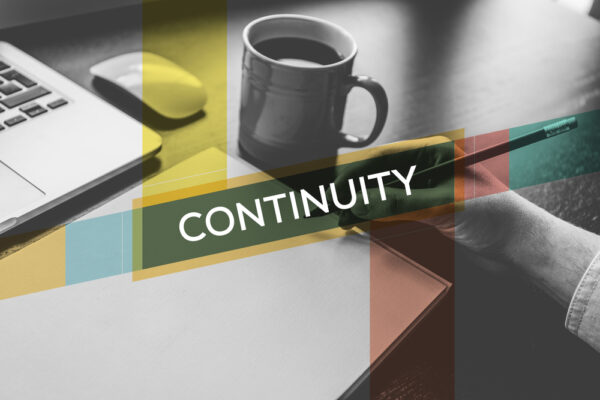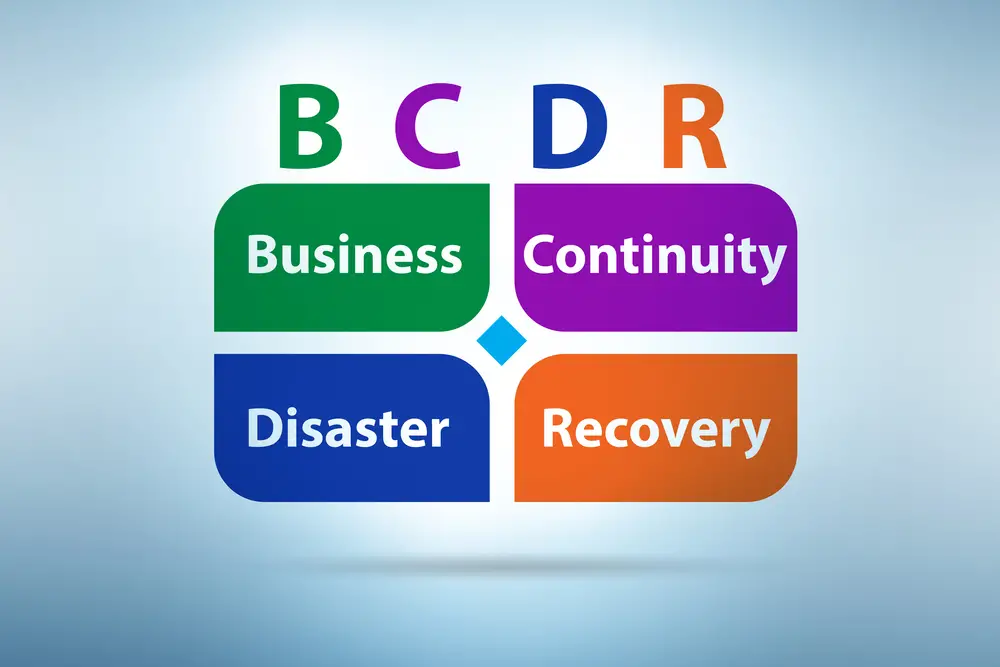As the world continues to move more and more of its business operations online, there is an ever-growing need for Software-as-a-Service (SaaS) business continuity plans. Businesses can ensure that their customers can still access and use their services in the event of a disaster or emergency.
A Saas Business Continuity Plan (BCP) is essential to running a successful SaaS business. It outlines the steps that need to be taken in order to prevent, plan for, and recover from potential threats such as cyber-attacks or data loss of disaster recovery procedures.
A BCP should include strategies for identifying and preventing basic threats and plans for responding to disasters.
The unique needs of your SaaS business are the first consideration. This includes factors such as the type of data you store, the systems you use, and any other specific requirements related to your operations.
Additionally, regularly reviewing your BCP is important to ensure it remains current with current best practices and industry standards.
Once you have identified the key components of your BCP template, there are several steps you can take to ensure its success:
- Identify potential risks and create mitigation plans for each one.
- Develop a disaster recovery plan that outlines how operations will continue in the event of a disaster.
- Establish clear communication channels between employees and stakeholders so that everyone knows their roles during an emergency.
- Test your BCP regularly by simulating different scenarios and evaluating their effectiveness.
- Document all BCP processes so they can be easily accessed if needed in an emergency situation.
- Ensure that all employees are trained on how to use the BCP in case of an emergency situation.
- Monitor changes in technology or regulations that may affect your BCP over time and adjust accordingly when necessary.
This blog post will discuss the basics of building a SaaS business continuity plan template.

What is a Business Continuity Plan?
It establishes protocols and creates prevention and recovery systems in case of a cyber-attack or natural disaster. Most business continuity plans emanate from bia business impact analysis, including the recovery point objective.
Creating a BCP involves conducting a business impact analysis to identify time-sensitive or critical business functions and processes and the resources that support them. This helps organizations prepare for potential threats and minimize any losses due to unexpected events.
The goal of a BCP is to enable ongoing operations before and during the execution of disaster recovery plans. It should include detailed instructions on how to respond to different types of disasters, such as fire, flood, or cyberattack, as well as strategies for restoring operations quickly and efficiently.
Having a comprehensive BCP can help organizations ensure their long-term success by mitigating risks associated with unexpected disruptions in service.
A business continuity plan is essentially a document that outlines how a company will recover from unforeseen events such as natural disasters, cyberattacks, data loss, or other major disruptions.
It includes procedures and strategies that enable businesses to remain operational while they are dealing with the fallout from such events. A SaaS business continuity plan template should include all of these same elements but with an emphasis on ensuring service delivery despite possible disruptions.
What is the Purpose of a Business Continuity Plan?
Business continuity planning mainly focuses on identifying and evaluating ways to continue operations after unforeseen events. Consequently, if businesses are affected by an event, they can plan their operations accordingly, significantly reducing operational downtime. BCPs help businesses stay profitable.
Its purpose is to establish protocols and create prevention and recovery systems in case of a cyber-attack or natural disaster. A BCP should identify time-sensitive or critical business functions and processes and the resources that support them.
It should also outline procedures and instructions an organization must follow in the face of disaster, whether fire, flood, or cyberattack. By having a well-developed BCP, businesses can ensure their long-term success by factoring in common pitfalls and risks.
The goal of a BCP is to ensure the continuity of critical business functions and processes, allowing the organization to recover quickly from any disruptions while minimizing losses.
To create an effective BCP, organizations must conduct a business impact analysis to identify time-sensitive or critical business functions and processes and the resources supporting them. This helps organizations prioritize their efforts when creating their BCPs. Once the analysis is complete, organizations can create plans for prevention, response, recovery, and monitoring of potential threats.
What are three essential elements of a BCP?
The business continuity plan includes risk assessments, an economic impact analysis, business recovery, and recovery of losses. These three components identify possible business disruption and the financial impact of the incident and determine the systems to recover from the incident.
BCPs are required to document people and procedures that control continuity planning, scheduling, and testing of the plans.
It is a comprehensive document that outlines the processes and procedures necessary to maintain normal business operations during an emergency or significant business disruption. The three essential elements of a BCP are:
Risk Assessment
Identifying potential risks and threats that could affect the organization’s operations and developing strategies to mitigate them.
A complete Risk Assessment is essential for a BCP. The best method of disaster prevention is to understand these disasters in detail. What activities can cause problems for your business? Several factors determine this event for every business.
In addition, small businesses on the ocean floor are more vulnerable to hurricanes and floods than businesses on inland coasts. Businesses located within the major cities of an area may face terrorism, roadblocks, and other terrorist activities.
Business Impact Analysis
Analyzing the impact of potential disruptions on the organization’s operations, including financial losses, customer service, supply chain, and other key areas.
Recovery Strategies
Developing plans for restoring critical systems and services in the event of a disruption, such as data backup and recovery, alternate site locations, communication protocols, recovery time objective.
Creating Your Business Continuity PlanTemplate
The first step in creating your SaaS business continuity plan template is to determine what type of service you provide and what level of support you need to provide in order for your customers to remain satisfied.
This will help you identify which areas of your service require additional attention during potential disasters or emergencies. Once this has been established, you can begin to develop specific strategies for each area.
Additionally, it’s important to define any roles and responsibilities within your organization so everyone knows who is responsible for what during an emergency situation.
Several key elements to consider. First, you need to identify the risks that could affect your organization, such as natural disasters, cyber-attacks, or power outages. Once you have identified these risks, you should develop strategies for mitigating them and minimizing their impact on your operations.
Additionally, you should do thorough risk assessment to determine which personnel are responsible for responding to each risk and how they will do so. You should also create plans for restoring operations after an incident has occurred and document all procedures related to the response and recovery process.
Finally, it is important to regularly review and update your business continuity plan template as needed. This ensures that it remains up-to-date with the latest information about potential risks and strategies for responding to them.
Testing Your Plan
Once your SaaS business continuity plan template has been created, it’s important to test it before relying on it during an emergency. This could involve running simulations or stress tests that expose potential weaknesses in your plan and allow you to adjust accordingly before putting it into action.
Man-made disaster
Man-made disasters are events that have been caused by human actions or negligence. These disasters can range from oil spills to train derailments, and they often have devastating consequences for the environment, people, and animals.
It is an accident — intentional and unintentional. Examples of bombs. Saboteurs. Communications problems, demonstrations, misconfigurations.
Business Continuity Planning
Business continuity and disaster planning, templates usually have a contact name and a phone number as a starting point to identify if there’s an emergency situation. They may be employees, management, or individuals within your recovery team.
They need that information before an incident to make sure emergency protocols and business processes can be properly activated and streamlined. The sections above can also give information about the name of those who developed the BCP.
A business continuity plan (BCP) is essential to any organization’s risk management strategy. It outlines the steps to be taken in the event of a disruption, such as a natural disaster or cyber-attack so that operations can continue with minimal interruption. BCPs typically include the following key features:
Strategy
A BCP will outline the company management’ strategies and objectives for maintaining operations during a disruption. This includes identifying essential functions and processes that must be sustained and determining how they will be maintained.
People
The BCP will define roles and responsibilities for crisis management leadership teams, backup site operators, recovery teams and other key personnel.
Backup Strategies
The plan should include backup strategies for data, systems, applications, and other critical resources to keep operations running smoothly. These strategies should be tested regularly to ensure their effectiveness in the event of an emergency.
Prevention & Recovery Systems
The BCP should establish protocols for preventing disruptions from occurring in the first place, as well as recovery systems for when they do occur. This includes identifying potential risks and vulnerabilities that could lead to a disruption and outlining steps to mitigate them.
Legal/Regulatory Requirements
Depending on the nature of your business, there may be legal or regulatory requirements related to business continuity planning that must be addressed in your BCP.
Adaptability
Finally, it’s important to make sure your BCP is adaptable so it can keep up with changes in technology or new threats that may arise over time.
Disaster Recovery Plan Template
The Disaster Recovery Plan Template is a template for preparing a disaster recovery strategy. Their simple recovery plan includes templates that will help you to customize your plan as you go along and step by step for every business.
Business Impact Analysis
Determine the impact of the various threat categories identified on operations. The impact of an event is defined as cost and disruption to the operation of an organization (simultaneously and long term).
Think of comprehensive business continuity plan and impact analysis as a derivative of Risk Assessment. In this document, you can clearly identify tangible impacts and consequences. It is, therefore, equally crucial in a risk assessment. It is difficult to prioritize your business continuity plan appropriately and accurately without knowing how incoming threats will affect your operations.

How do you write a business continuity plan?
Developing an effective business continuity plan is crucial to understanding how your company will be disrupted. This plan must describe this threat in detail and outline recovery steps and procedures. Business continuity plans usually include an introduction to their purpose, risk assessments, recovery objectives and business impact analysis.
A BCP should include steps to prevent disasters and systems to restore critical business functions in the event of an unplanned disruption.
When writing out a BCP, conducting a business impact analysis is important first. This will help identify time-sensitive or critical business functions and processes and the resources that support them.
The plan should also include details on how to respond to different types of disasters, such as natural disasters or cyberattacks, and what steps need to be taken in order to keep operations running smoothly during and after the incident.
Start the SaaS Business Continuity Plan in time
Continuity planning should be done for all SaaS projects early. The transition from SaaS to cloud services is no different. Often security disasters can be prevented through faulty equipment training or inadequate procedures.
Once we’ve moved data to the other cloud provider, the IT team will need to take up all responsibilities for the overall security and continuity plans.
The basic strategies for a good SaaS Business Continuity Plan
A great continuity plan should always remain current and active. Threats or risks change. Organizations must regularly monitor their response in the event of a disaster. It is common for companies that are suddenly losing business-critical software to smoke and vaporize.
A good BCP should include four key elements:
Risk Assessment: Identify and prioritize potential risks based on their likelihood and impact. This will help you determine which risks require the most attention and resources.
Prevention: Develop policies and procedures to reduce the risk of disruption and ensure business continuity. These may include backup plans, redundancy measures, security protocols, etc.
Mitigation: Develop strategies for responding quickly to disruptions in order to minimize their impact on operations. This may involve having a team dedicated to monitoring threats and responding immediately when necessary.
Recovery: Develop plans for restoring operations after a disruption has occurred. This may involve having redundant systems in place, as well as backups of data that can be used to restore operations quickly after an incident has occurred.
Why Business Continuity is Important
The loss of continuity is extremely damaging. According to Datto figures, an hour of downtime can be as much as $5 million, depending on the size of the business. When the worst happens, an unprepared business could suffer multiple consequences.
A plan to deal with potential threats such as fire, flood, or cyberattack is essential for any business. A business continuity plan outlines procedures and instructions an organization must follow in the face of disaster so personnel and assets are protected and operations can continue without interruption.
It also identifies the effects resulting from the disruption of business functions and processes, so appropriate measures can be taken to mitigate them.
Creating an effective business continuity plan requires careful planning and preparation. It should include steps to identify potential risks, strategies to reduce their impact, communication protocols for informing staff and customers about disruptions, backup plans for critical systems, and recovery plans to get back up and running quickly after a disaster.
Business continuity is essential for any organization that wants to remain competitive in today’s market. Having a plan in place helps ensure that your organization can respond quickly and effectively in the event of a disruption or emergency.
Strategies for Business continuity plan templates
Improve the data and network strategy
A healthy network infrastructure is crucial in implementing a successful technology system. Intelligent strategies that may help us improve the BusinessContinuity Plan in SaaS. When using the supplier’s software, we must ensure that the data center has strong security measures such as backup recovery and prevention for data backup.
Continuity in business consists of mitigation against unforeseen incidents. A DDoS attack may affect our daily activities when the server is distributed.
Communication Plan
This section provides an efficient framework for retaining contact between stakeholders and the appropriate audience throughout the entire process of a disaster.
Managing a communications crisis is crucial. Without these tools, recovery can become difficult.
Plan Review & Update Schedule
Specifically to define routine business continuity procedures. Information contained in Business Continuity Plans may become quickly obsolete without being maintained. In some cases, recovery workers may be able to leave the firm.
Documents that recover information may become inaccurate after software updates are released. New risks can emerge which are not identified during risk assessments. Keeping an eye on the BCP helps to ensure documentation remains accurate. It specifies the schedules for reviewing plans.

Continuity Testing
This section defines how business continuity processes will be evaluated for effectiveness. At this time, you need to have a robust business continuity plan. Obviously, there are some serious problems in real-life situations too.
Consequently, you must regularly test if your backup system needs to recover. Routine testing helps ensure that your continuity plans will work effectively and assists in diagnosing all problems that must be resolved before a catastrophe occurs.
Continuity Gaps & Recommendations
Describe the weaknesses in the current BCP discovered during the planning process and outline the action items required to fill these continuity gaps. There’s no complete business continuity system.
The continuity planning of a system should therefore be a continuous process that identifies potential risks and provides steps needed to mitigate these risks. That’s what we want for this section.
Conclusion
Creating an effective SaaS business continuity plan template requires careful thought and consideration. You need to consider exactly what services you provide, identify which areas might require additional attention during an emergency, define any roles and responsibilities within your organization, and test the results before relying on them in real-life scenarios.

Chris Ekai is a Risk Management expert with over 10 years of experience in the field. He has a Master’s(MSc) degree in Risk Management from University of Portsmouth and is a CPA and Finance professional. He currently works as a Content Manager at Risk Publishing, writing about Enterprise Risk Management, Business Continuity Management and Project Management.


